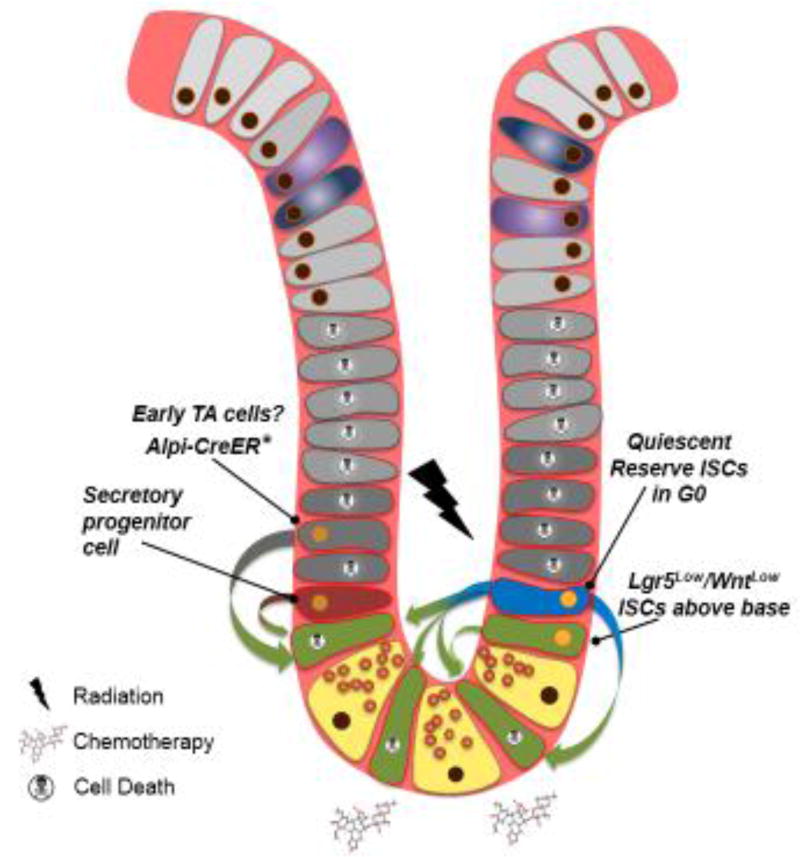Figure 2.
Intestinal regeneration after injury. Exposure to DNA damaging agents such as high-dose gamma radiation or chemotherapeutics ablates actively cycling cells, including CBCs and transit-amplifying cells. Some cells are able to survive DNA damage, and some of these cells can contribute to the post-injury regenerative process. In response to DNA damage, reserve ISCs enter the cell cycle to replenish the CBC compartment and epithelium. Additionally, some reports indicate that WntLow CBCs above the crypt base as well as cells downstream of the CBC can resist DNA damage-induced cell death and contribute to repopulation, including a rare subpopulation of secretory progenitor cells. Further, in non-physiological injury settings in which CBCs are genetically ablated with diphtheria toxin (asterisk), transit-amplifying cells marked by Alpi-CreER can fall back into the CBC niche and re-establish stem cell identity. The quantitative contribution of secretory progenitors and Alpi-CreER-marked cells to regeneration based on lineage tracing is, however, minimal, and no evidence exists demonstrating its functional importance.

